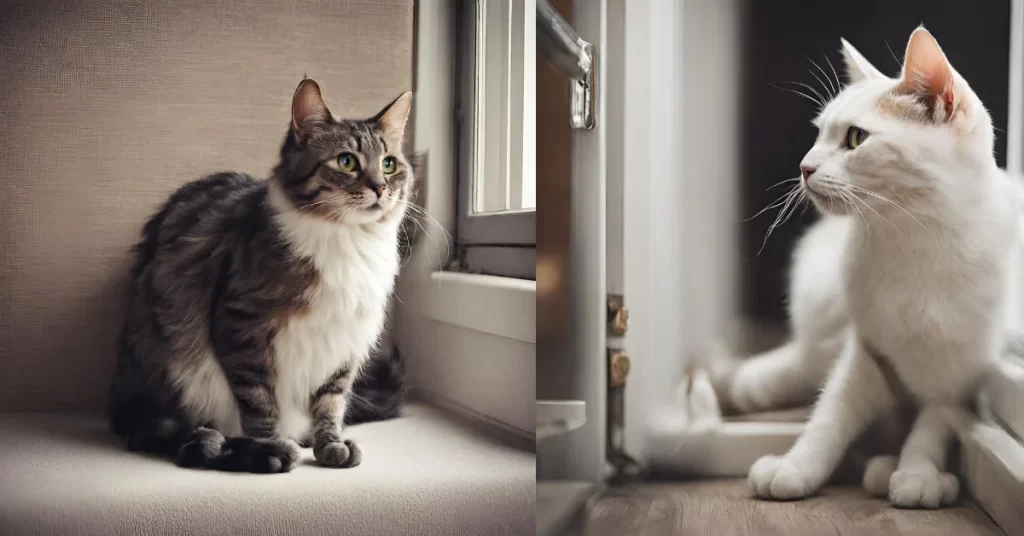Even though you love your cat, they may sometimes like to run away. They can be gone for several days or disappear entirely. We often trust that our cats will return home, but what happens when they don’t? In this blog, we will discuss why cats run away and whether lost cats can find their way back home and what to do if indoor cat goes missing?.

Understanding the instinctual nature of Indoor cats
Cats are solitary creatures by nature, often venturing out on their own for hunting and exploring.
Their territorial instincts drive them to roam and mark their territory.
Cats have a strong homing instinct, but external factors can disrupt their return home.
Curiosity and a quest for new environments may lead them to explore areas far from home.
Changes in routine, stress, or even encounters with predators can deter a cat from coming back.
Factors that may cause a cat to leave

Changes in environment:
Cats are very sensitive to changes in their surroundings· Moving to a new home, introducing a new pet, or experiencing renovations can cause a cat to feel stressed and inclined to leave·
Lack of identification:
Cats without proper identification, such as a collar with contact information or a microchip, may wander off and be unable to find their way back home·
Fear or trauma:
Loud noises, aggressive behavior from other animals, or traumatic experiences can prompt a cat to flee in an effort to escape the source of fear.
Searching for a mate:
Unspayed or unneutered cats may leave home in search of a partner during mating season, leading them to roam further than usual.
Illness or injury:
Cats may instinctively try to hide when they are sick or in pain. If a cat goes missing, it is crucial to consider the possibility of a health issue driving their departure.
The importance of microchipping your cat
Microchipping your cat can greatly increase the chances of being reunited if they go missing.
A microchip is a permanent form of identification that cannot be easily removed or lost.
Shelters and veterinary clinics have scanners to detect microchips, making it easier to identify lost cats.
Ensure your contact information is up to date with the microchip registry to facilitate a quick reunion if your cat is found.
Microchipping is a simple and relatively painless procedure that can provide peace of mind for cat owners.
what to do if indoor cat goes missing?
Search the immediate area:
Look in hiding spots close to home like under porches or bushes.
Check with neighbors:
Ask neighbors to check their garages, sheds, or any place where your cat might be trapped.
Create flyers:
Make detailed flyers with a clear photo of your cat and your contact information.
Post on social media:
Share your missing cat’s information on local community groups and social media platforms.
Contact local shelters and vets:
Notify them about your missing cat and provide a description.
Set up food and familiar items outside:
Place food, litter box, or your cat’s bedding outside to attract them back home.
Stay positive and keep searching:
Cats can return after days or weeks, so don’t lose hope.
Tips for preventing your cat from leaving again
Identification:
Ensure your cat has a collar with an identification tag containing your contact information.
Microchipping:
Consider microchipping your cat, as it provides a permanent method of identification.
Secure the environment:
Create a safe and secure outdoor space with cat-proof fencing or enclosures.
Spaying or neutering:
Having your cat spayed or neutered can reduce the likelihood of roaming.
Regular vaccinations:
Keep your cat healthy and prevent diseases that may lead to wandering.
Quality time:
Spend quality time with your cat to strengthen the bond and deter them from leaving again.
Dealing with the emotional impact of a missing cat
Acknowledge the feelings:
It is normal to experience a range of emotions when a cat goes missing. Allow yourself to feel sadness, worry, guilt, or even anger.
Seek support:
Reach out to friends, family, or support groups who understand the bond between pet and owner. Talking about your feelings can help in processing them.
Put up flyers:
Take proactive steps to find your cat, such as creating flyers with a recent photo and contact information. This can also give you a sense of actively searching.
Take care of yourself: Remember to eat well, rest, and engage in activities that bring you comfort. Self-care is crucial during this stressful time.
Conclusion:
It’s important to understand the reasons why cats run away and take necessary steps to prevent it. Whether it’s creating a safe and stress-free environment, spaying/neutering, providing proper care and attention, or addressing their curiosity, knowing your cat’s behaviors can help keep them safe and happy.
Have you ever had a cat that ran away? Share your experiences in the comments below!
Why do cats run away, even though they are indoor cats?
Natural Instincts: Cats are naturally curious and territorial, leading them to explore and roam, even if kept indoors.
Stressful Changes: New pets, renovations, loud noises, or even moving houses can cause stress, prompting them to flee.
Unidentified: Without a collar or microchip, a lost cat has no way to be identified or returned home.
Mating Needs: Unspayed or unneutered cats may seek mates during mating season, leading them to stray further.
Illness or Injury: Sick or injured cats may instinctively hide, making them difficult to find.
How important is microchipping my cat?
Permanent identification: Unlike collars, microchips can’t be removed or lost.
Increased chances of reunion: Shelters and vets use scanners to identify microchipped animals.
Faster recovery: Updated contact information ensures a swift reunion if your cat is found.
Simple and painless procedure: Microchipping is a quick and relatively comfortable process for your cat.
What should I do if my indoor cat goes missing?
Search the immediate area: Look under porches, bushes, and other close hiding spots.
Ask neighbors: Check their sheds, garages, and anywhere your cat might be trapped.
Create flyers: Include a clear photo and your contact information.
Post on social media: Share information on local community groups and platforms.
Contact shelters and vets: Inform them about your missing cat with a detailed description.
Set up familiar items outside: Place food, litter box, or bedding to attract them back.
Stay positive and keep searching: Don’t lose hope, as cats can return after days or even weeks.
How can I prevent my cat from running away again?
Identification: Ensure your cat has a collar with a tag and consider microchipping.
Secure environment: Create a safe outdoor space with cat-proof fencing or enclosures.
Spaying or neutering: This can reduce roaming behavior, especially during mating season.
Regular vaccinations: Keep your cat healthy to prevent illnesses that might make them wander.
Quality time: Strengthen your bond with your cat through playtime and interaction.
How do I deal with the emotional impact of a missing cat?
Acknowledge your feelings, whether sadness, worry, guilt, or anger. Seek support from friends, family, or online communities. Take proactive steps like putting up flyers. Remember to take care of yourself by eating well, resting, and engaging in comforting activities.
By understanding these reasons, taking preventive measures, and acting promptly if your cat goes missing, you can increase your chances of a happy reunion.
Looking for More articles on Indoor Activities? Visit our Website www.indoorgem.com






